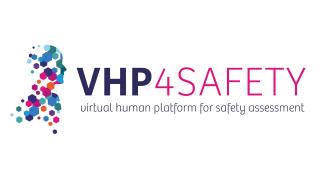Biotransformation of proteratogenic anti-epileptics in the zebrafish embryo
The zebrafish (Danio rerio) embryo has gained interest as an alternative model for developmental toxicity testing, which still mainly relies on in vivo mammalian models (e.g., rat, rabbit). However, cytochrome P450 (CYP)-mediated drug metabolism, which is critical for the bioactivation of several proteratogens, is still under debate for this model. Therefore, we investigated the potential capacity of zebrafish embryos/larvae to bioactivate two known mammalian proteratogens, carbamazepine (CBZ) and phenytoin (PHE) into their mammalian active metabolites, carbamazepine-10,11-epoxide (E-CBZ) and 5-(4-hydroxyphenyl)-5-phenylhydantoin (HPPH), respectively. Zebrafish embryos were exposed to three concentrations (31.25, 85, and 250 μM) of CBZ and PHE from 51⁄4 to 120 hours post fertilization (hpf) at 28.5°C under a 14/10 hour light/dark cycle. For species comparison, also adult zebrafish, rat, rabbit and human liver microsomes (200 μg/ml) were exposed to 100 μM of CBZ or PHE for 240 minutes at 28.5°C. Potential formation of the mammalian metabolites was assessed in the embryo medium (48, 96, and 120 hpf); pooled (n=20) whole embryos/larvae extracts (24 and 120 hpf); and in the microsomal reaction mixtures (at 5 and 240 minutes) by targeted investigation using a UPLC–Triple Quadrupole MS system with lamotrigine (0.39 μM) as internal standard. Our study showed that zebrafish embryos metabolize CBZ to E-CBZ, but only at the end of organogenesis (from 96 hpf onwards), and no biotransformation of PHE to HPPH occurred. In contrast, our in vitro drug metabolism assay showed that adult zebrafish metabolize both compounds into their active mammalian metabolites. However, significant differences in metabolic rate were observed among the investigated species. These results highlight the importance of including the zebrafish in the in vitro drug metabolism testing battery
for accurate species selection in toxicity studies.
New

Helpathon #12 – Can you help Erica?

The NAM Navigator: A unique repository for information on the validation and acceptance of New Approach Methodologies
